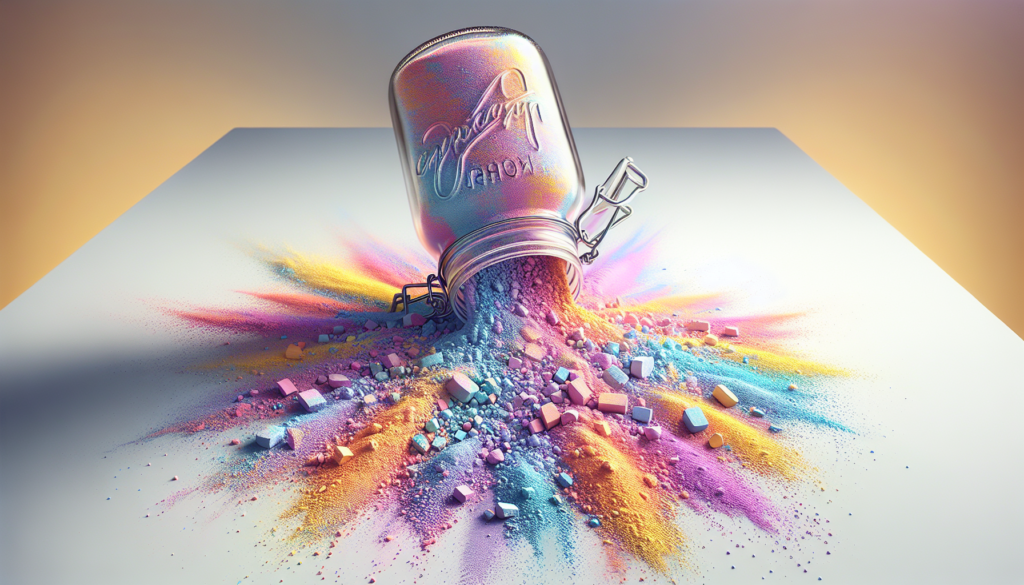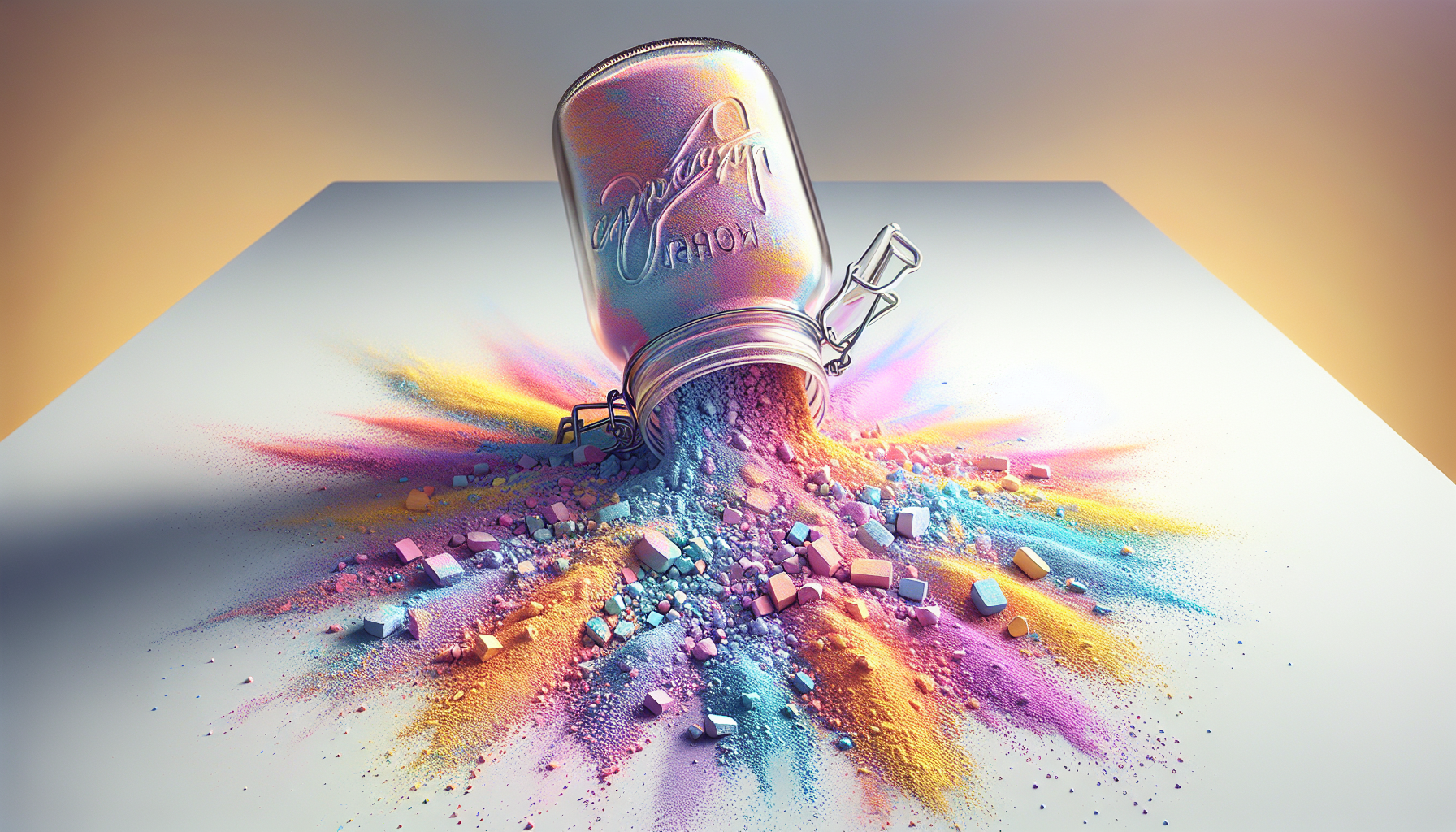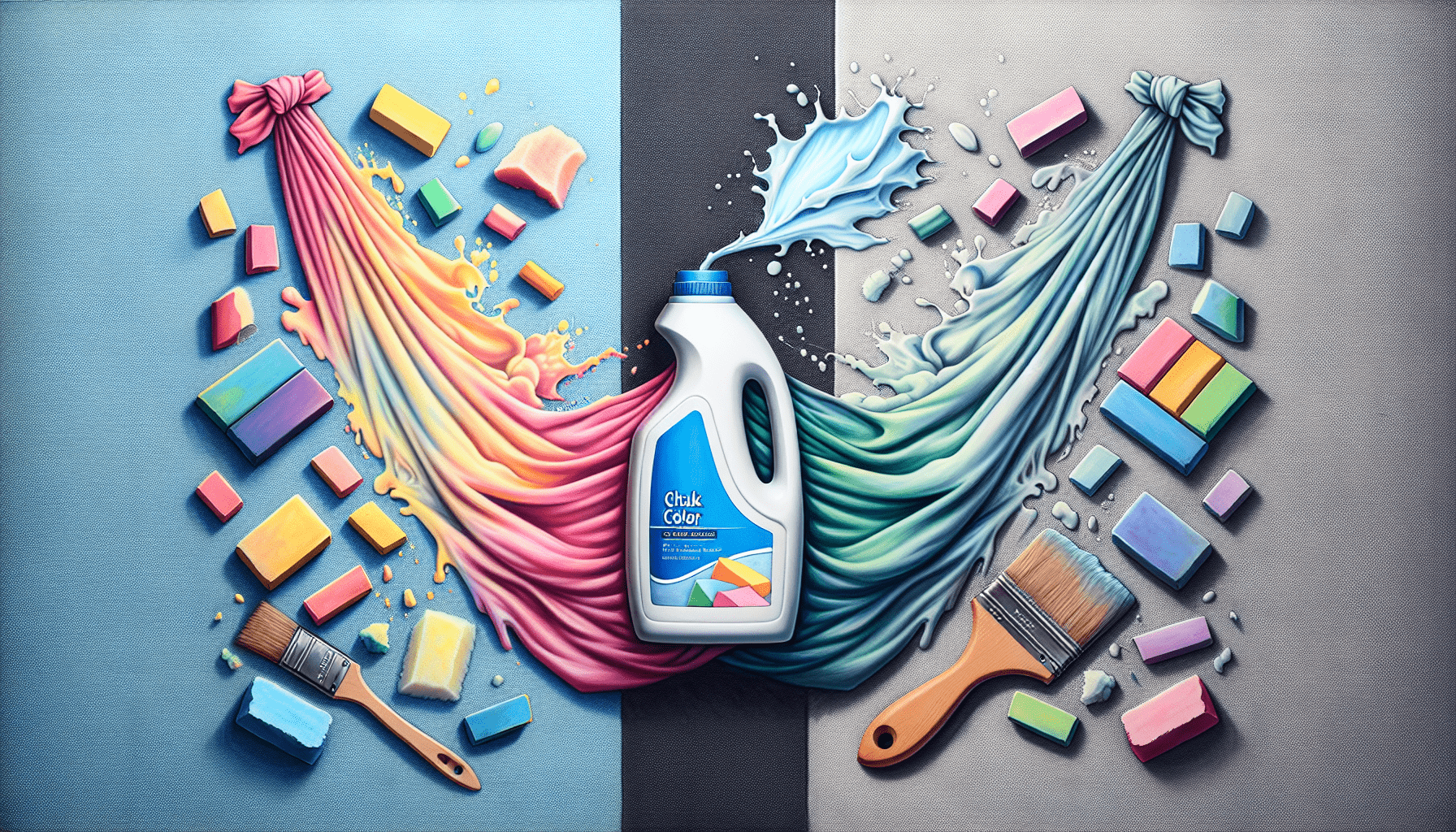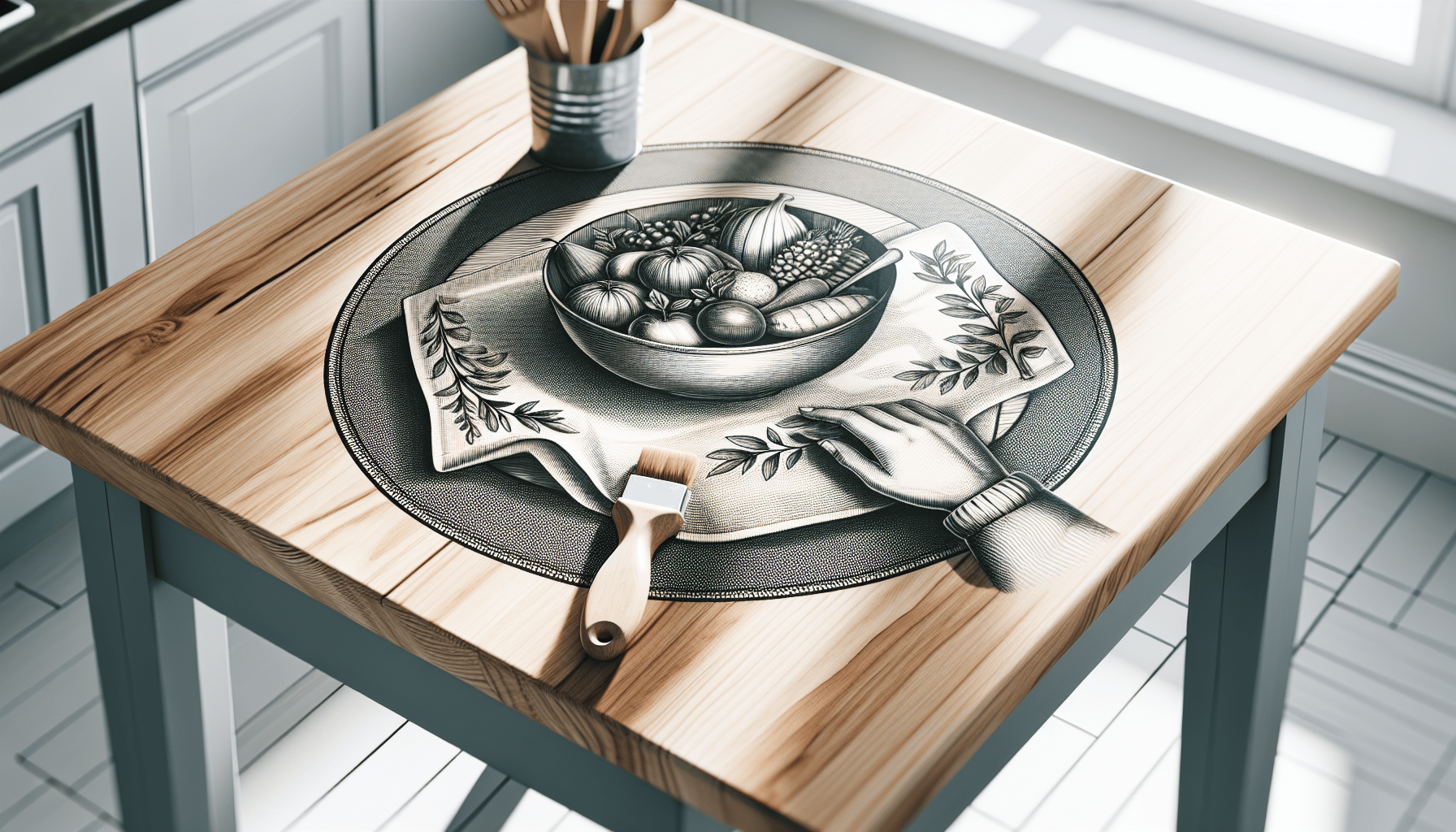You have painstakingly transformed a piece of furniture with chalk paint, carefully applying layers to achieve the desired look. However, when you finally go to seal and protect your masterpiece with wax, you notice that the chalk paint is coming off. Frustration sets in as you wonder what went wrong and why your efforts are not yielding the desired results. In this article, we will explore the possible reasons behind this issue and provide practical solutions to ensure that your chalk paint adheres properly when waxed.

Common Causes of Chalk Paint Coming Off When Waxing
Wrong paint application
One of the common causes of chalk paint coming off when waxing is incorrect paint application. If the paint is applied too thickly or unevenly, it can affect the adherence of the wax. It is important to follow the manufacturer’s instructions regarding the proper application technique, such as using thin coats and allowing sufficient drying time between layers.
Insufficient drying time
Another factor that can lead to chalk paint coming off when waxing is insufficient drying time. If the paint has not fully cured before applying the wax, it may not adhere properly and could result in the wax pulling the paint off. Be sure to allow the recommended drying time specified by the manufacturer before proceeding with the waxing process.
Incompatibility between paint and wax
Using incompatible paint and wax products can also cause the chalk paint to come off when waxing. Some paints and waxes are formulated to work together, so it is important to ensure that the products you choose are compatible. Read the product labels and instructions carefully to determine if there are any specific recommendations for paint and wax compatibility.
Applying too much pressure while waxing
Applying excessive pressure when waxing can cause the chalk paint to come off. The wax should be applied using gentle, even strokes with a quality wax brush. Applying too much pressure can remove the paint or create streaks, compromising the overall finish. It is essential to apply the wax with a light touch to avoid damaging the paint surface.
Factors That Influence Chalk Paint Adherence to Wax
Humidity and temperature
Humidity and temperature can have a significant impact on the adherence of chalk paint to wax. High humidity levels can slow down the drying process, resulting in insufficient curing time for the paint. Extremely low temperatures can also affect the drying time and overall durability of the paint. It is advisable to work in a well-ventilated area with moderate temperature and humidity levels to ensure optimal adhesion.
Surface preparation
Proper surface preparation plays a crucial role in the adherence of chalk paint to wax. The surface should be clean, dry, and free from any grease, dirt, or previous finishes. It is recommended to clean the surface thoroughly before applying the paint and to ensure it is completely dry before proceeding with the waxing process. This will help the paint and wax bond effectively to the surface.
Type of chalk paint used
The type of chalk paint used can also influence its adherence to wax. Different brands or formulations of chalk paint may have varying properties, including their ability to bond with wax. It is essential to choose a high-quality chalk paint that is known for its compatibility with wax. Reading product reviews and seeking recommendations can help ensure that you select a paint that is suitable for your project.
Quality of wax
The quality of the wax used can have a significant impact on the adherence of chalk paint. Low-quality waxes may not provide sufficient protection or durability, leading to the paint coming off when waxing. It is advisable to invest in a reputable wax product that is specifically designed for use with chalk paint. High-quality waxes will not only provide a better finish but also enhance the longevity of the paint.
Ways to Prevent Chalk Paint from Coming Off When Waxing
Proper paint application
To prevent chalk paint from coming off when waxing, it is essential to ensure proper paint application. Follow the manufacturer’s instructions regarding thin coats, proper drying time, and suitable application techniques. Applying the paint evenly and allowing adequate drying time between coats will promote better adhesion and reduce the likelihood of the paint pulling off during waxing.
Adequate drying time
Allowing sufficient drying time is crucial for the longevity of chalk paint when waxing. Rushing the drying process can result in weak adhesion and the paint easily coming off. Follow the recommended drying time specified by the manufacturer to ensure that the paint has fully cured before applying the wax. This will promote a stronger bond between the paint and wax.
Using compatible paint and wax
Using compatible paint and wax products is vital to prevent chalk paint from coming off during the waxing process. Some paints and waxes are specifically formulated to work together, providing better adhesion and durability. Be sure to choose products that are recommended for use with each other, as indicated by the manufacturer. Testing the compatibility of paint and wax on a small, inconspicuous area is also advisable before starting a larger project.
Applying wax with the right pressure
Applying the wax with the appropriate pressure is crucial to prevent chalk paint from coming off. Avoid applying excessive pressure, as it can remove the paint or create streaks. Instead, use gentle, even strokes with a quality wax brush to apply the wax. This will ensure that the wax is evenly distributed and adheres well to the paint surface without compromising the finish.
Techniques for Maximizing Adhesion between Chalk Paint and Wax
Surface cleaning and prep
Proper surface cleaning and preparation are essential for maximizing adhesion between chalk paint and wax. Ensure that the surface is clean, dry, and free from any grease, dirt, or previous finishes. Use a mild detergent or a specially formulated surface cleaner to remove any contaminants. Allow the surface to dry thoroughly before proceeding with the application of paint or wax.
Light sanding
Lightly sanding the surface before applying chalk paint can help maximize adhesion between the paint and wax. Sanding creates a rougher texture on the surface, allowing the paint and wax to better grip. Use fine-grit sandpaper to gently roughen the surface, being careful not to remove too much of the underlying material. After sanding, remove any dust or debris before applying the paint.
Using a bonding agent
Using a bonding agent can significantly enhance the adhesion of chalk paint to the surface. A bonding agent is typically mixed with the paint before application and helps it adhere more effectively. Follow the manufacturer’s instructions regarding the ratio of bonding agent to paint. This technique is especially useful for surfaces that are prone to poor adhesion, such as glossy or previously finished surfaces.
Layering techniques
Layering chalk paint can improve adhesion and durability when waxing. Apply multiple thin coats of paint, allowing each layer to dry fully before applying the next. This technique promotes better bond formation between the paint layers as well as between the final layer and the wax. Layering also allows for better coverage and helps to minimize brush strokes or uneven areas.

Troubleshooting Common Issues when Waxing Chalk Paint
Peeling or cracking
If you experience peeling or cracking of the chalk paint when waxing, it may be due to inadequate surface preparation or improper paint application. Ensure that the surface is clean, dry, and properly primed before applying the paint. Additionally, follow the manufacturer’s instructions regarding thin coats and sufficient drying time. If the issue persists, removing the old wax layer and reapplying both paint and wax may be necessary.
Streaks or uneven coverage
Streaks or uneven coverage can occur when waxing chalk paint if the wax is not applied evenly. Make sure to use a quality wax brush and apply the wax in gentle, even strokes. Avoid applying too much pressure, as it can remove the paint or create streaks. If streaks or uneven areas occur, buffing the wax gently with a clean cloth can help to blend and even out the finish.
Wax buildup
Wax buildup can occur when too much wax is applied or when multiple layers of wax are not buffed properly. Excessive wax can create a sticky or tacky surface and may lead to the paint coming off. To fix wax buildup, gently remove the excess wax using a clean cloth or a wax removal product recommended by the manufacturer. Reapply a thin, even layer of wax and buff it to achieve the desired finish.
Cloudy appearance
A cloudy appearance of the waxed surface can be caused by various factors, such as improper application or using low-quality wax. Ensure that the wax is applied evenly and buffed properly to achieve a clear finish. Additionally, using a high-quality wax product can help prevent cloudiness. If the issue persists, removing the old wax layer and reapplying both paint and wax may be necessary.
Tips for Achieving a Smooth, Durable Chalk Paint Finish
Choose the right paint and wax
Selecting the right paint and wax is crucial for achieving a smooth and durable chalk paint finish. Choose a high-quality chalk paint that is compatible with the surface you are painting and with the wax you intend to use. Similarly, opt for a reputable wax product that is designed for use with chalk paint. Using products that are known for their quality and compatibility will help ensure a successful outcome.
Follow the manufacturer’s instructions
Always follow the manufacturer’s instructions when working with chalk paint and wax. The manufacturer will provide specific guidelines for paint application, drying time, waxing techniques, and curing. By adhering to these instructions, you can avoid common issues and achieve the best possible results. If any doubts or questions arise, consult the manufacturer’s website or customer service for additional guidance.
Apply multiple thin coats of paint
When applying chalk paint, it is advisable to apply multiple thin coats rather than one thick coat. Thin coats dry more evenly and allow for better adhesion between the layers. They also help to minimize brush strokes and create a smoother finish. Allow each coat to dry fully before applying the next, following the recommended drying time specified by the manufacturer.
Use a quality wax brush
Investing in a high-quality wax brush can make a significant difference in the final result of your chalk paint finish. A good wax brush, with soft bristles and a comfortable grip, will help you apply the wax more evenly and smoothly. The brush’s design and bristle quality will contribute to a better distribution of the wax and minimize the risk of streaks or uneven coverage.
How to Fix Chalk Paint Coming Off When Waxing
Remove the old wax layer
If the chalk paint is coming off when waxing, it may be necessary to remove the old wax layer before making any repairs. Using a wax removal product recommended by the manufacturer, apply it to the surface and gently scrub or wipe off the wax. Ensure that the surface is clean and dry before proceeding with any further steps.
Reapply chalk paint and wax
Once the old wax layer has been removed, you can proceed with reapplying the chalk paint and wax. Follow the proper paint application techniques and allow adequate drying time between layers. When applying the wax, use a quality wax brush and apply it with gentle, even strokes. Allow the wax to dry and cure fully according to the manufacturer’s instructions before using or buffing the surface.
Sand and repaint the surface
If the issue persists after removing the old wax layer and reapplying the paint and wax, it may be necessary to sand and repaint the surface. Lightly sand the entire surface to create a rougher texture that will promote better adhesion. Clean the surface to remove any dust and debris and proceed with applying a fresh coat of chalk paint. Allow the paint to dry fully, following the manufacturer’s instructions, before waxing again.
When to Seek Professional Help for Chalk Paint Issues
Persistent problems despite troubleshooting
If you are experiencing persistent problems with your chalk paint finish despite following proper techniques and troubleshooting steps, it may be time to seek professional help. Professionals with experience in chalk paint finishes can assess the issue and provide specialized advice or solutions. They may have additional tips and techniques to address specific problems or recommend alternative products.
Complex or large-scale projects
Complex or large-scale chalk paint projects may require professional assistance to ensure a successful outcome. Professionals have the expertise and resources to handle intricate designs or extensive surfaces more efficiently. They can provide guidance on proper surface preparation, paint application, waxing techniques, and troubleshooting common issues. Seeking professional help for such projects can save time, effort, and potential frustration.
Lack of time or expertise
If you have limited time or lack the expertise necessary for a chalk paint project, it may be beneficial to enlist professional help. Professionals can complete the project more efficiently, ensuring a high-quality finish within the desired timeframe. Additionally, they can offer valuable insights and recommendations based on their experience, helping you achieve the best results without the need for extensive research or trial and error.
The Importance of Understanding Chalk Paint and Wax Compatibility
Choosing the right brand and type of paint and wax
Understanding the compatibility between chalk paint and wax is crucial for a successful finish. Different brands or types of paint and wax may have varying properties and formulations. Some paints and waxes are designed to work together, ensuring optimal adhesion and durability. Research and select a brand and type of paint and wax that are known to be compatible with each other to achieve the desired results.
Reading product labels and instructions
Reading product labels and instructions is essential when working with chalk paint and wax. This information provides important details about the product’s properties, recommended application techniques, and compatibility with other products. By carefully reviewing the labels and instructions, you can ensure that you are using the products correctly and in a manner that promotes good adherence and longevity.
Performing compatibility tests before large projects
Before starting a large-scale or important chalk paint project, it is wise to perform compatibility tests on a small, inconspicuous area. Apply the paint and wax according to the manufacturer’s instructions and assess the adhesion, finish, and durability. This will help identify any potential issues or incompatibilities before committing to a larger project, allowing for adjustments or alternative product choices if necessary.
Conclusion
In conclusion, there are several common causes of chalk paint coming off when waxing, including wrong paint application, insufficient drying time, incompatibility between paint and wax, and applying too much pressure while waxing. Factors that influence chalk paint adherence to wax include humidity and temperature, surface preparation, type of chalk paint used, and quality of wax. To prevent chalk paint from coming off when waxing, proper paint application, adequate drying time, using compatible paint and wax, and applying wax with the right pressure are recommended. Techniques for maximizing adhesion between chalk paint and wax include surface cleaning and prep, light sanding, using a bonding agent, and layering techniques. Troubleshooting common issues when waxing chalk paint, such as peeling or cracking, streaks or uneven coverage, wax buildup, and cloudy appearance, can be addressed through proper surface preparation, buffing, removing excess wax, or applying a new coat of paint and wax. Tips for achieving a smooth, durable chalk paint finish include choosing the right paint and wax, following the manufacturer’s instructions, applying multiple thin coats of paint, and using a quality wax brush. If chalk paint comes off when waxing, it can be fixed by removing the old wax layer, reapplying chalk paint and wax, or sanding and repainting the surface. Seeking professional help may be necessary for persistent problems, complex or large-scale projects, or lack of time or expertise. Understanding the importance of chalk paint and wax compatibility, including choosing the right brand and type, reading product labels and instructions, and performing compatibility tests before large projects, is essential for a successful finish. By following these guidelines, you can achieve a beautiful and long-lasting chalk paint finish without experiencing issues with paint coming off when waxing.



